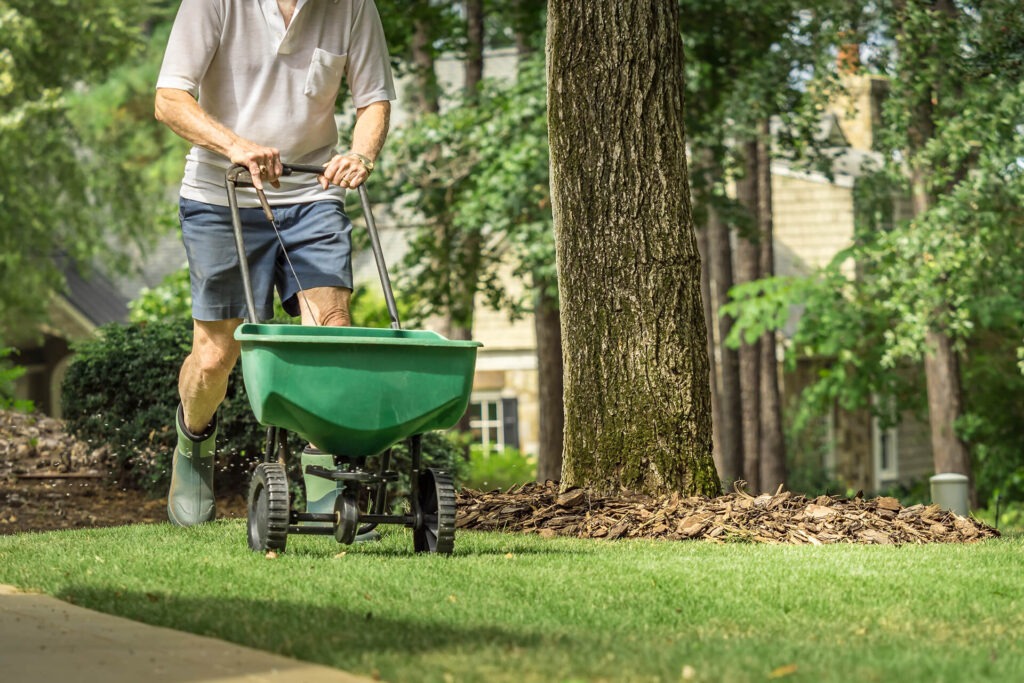Lawn Care Fertilizing
It Feels Like Home!

Lawn Care Fertilizing Tips: Nourishing Your Lawn for Lush Growth.
Lawn Care Fertilizing Tips for maintaining healthy green grass. A vibrant lawn requires proper fertilization to provide essential nutrients:
Soil Test: Before applying fertilizer, conduct a soil test to determine its pH level and nutrient deficiencies. This will help you choose the right type of fertilizer and application rate for your lawn’s specific needs.
Choose the Right Fertilizer: Select a high-quality, balanced fertilizer that contains the essential nutrients your lawn requires, such as nitrogen (N), phosphorus (P), and potassium (K). Look for a fertilizer with a slow-release formula to provide steady nutrition over time.
Follow Application Instructions: Read and follow the manufacturer’s instructions carefully when applying fertilizer. Measure the correct amount of fertilizer for your lawn’s size and apply it evenly using a spreader to avoid over-fertilizing or creating uneven patches.
Timing Matters: Apply fertilizer during the growing season when your grass is actively growing and able to absorb nutrients efficiently. In most regions, early spring and fall are ideal times for fertilization, but avoid fertilizing during periods of drought or extreme heat.
Water Thoroughly: After applying fertilizer, water your lawn thoroughly to help activate the nutrients and carry them down to the root zone. Watering also helps prevent fertilizer burn and ensures even distribution of nutrients throughout the soil.
Mow Regularly: Maintain proper mowing practices to promote healthy grass growth and minimize stress on your lawn. Keep your mower blades sharp and mow at the appropriate height for your grass species to encourage strong root development and dense turf.
Use Organic Alternatives: Consider using organic fertilizers or compost to feed your lawn naturally and improve soil health over time. Organic fertilizers release nutrients slowly and support beneficial microbial activity in the soil, resulting in healthier, more resilient grass.
Monitor Results: Keep an eye on your lawn after fertilization to assess its response and adjust your fertilization schedule or techniques as needed. Look for signs of over-fertilization, such as yellowing or burning of the grass, and make necessary adjustments to avoid damage.
Practice Sustainability: Minimize environmental impact by choosing eco-friendly fertilizers and applying them responsibly. Avoid fertilizing near water bodies or on slopes where runoff is likely, and always clean up any fertilizer spills or excess product to prevent contamination.
Regular Maintenance: Incorporate fertilization into your lawn care routine as part of ongoing maintenance to keep your lawn healthy and vibrant throughout the growing season. Combine fertilization with other practices such as aerating, overseeding, and weed control for optimal results.
By following these lawn care fertilizing tips, you can provide your lawn with the nutrients it needs to thrive, resulting in a lush, green carpet of grass that enhances your outdoor space and adds curb appeal to your home. Remember to fertilize responsibly and tailor your approach to meet the unique needs of your lawn for best results.
